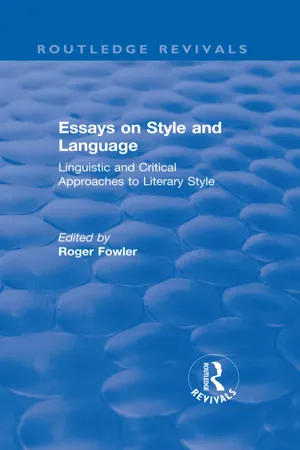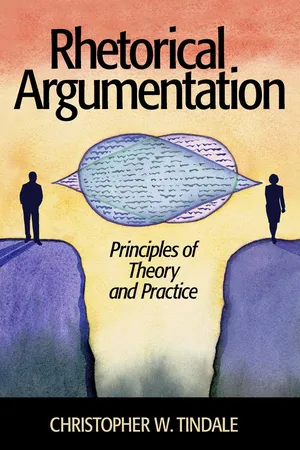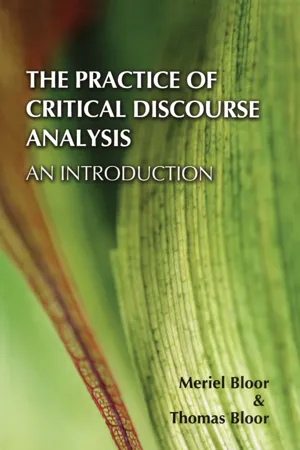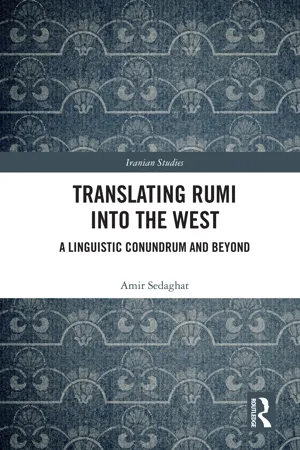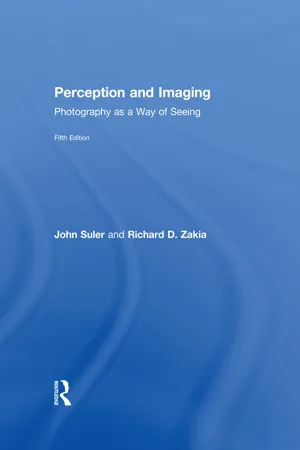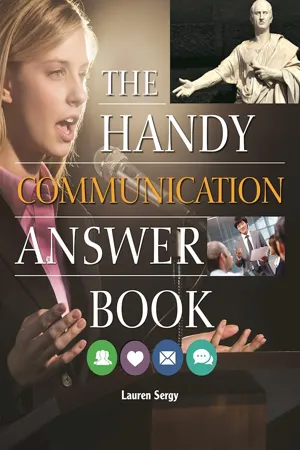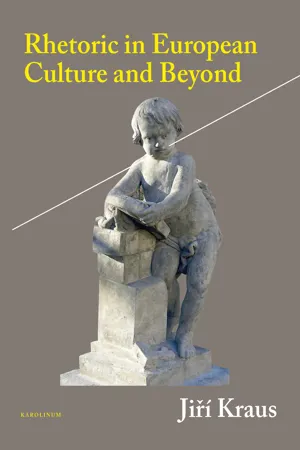Languages & Linguistics
Rhetorical Figures
Rhetorical figures are linguistic devices used to enhance the persuasiveness and impact of communication. They include techniques such as metaphors, similes, and hyperbole, which are employed to create vivid imagery, emphasize key points, and engage the audience. By skillfully incorporating rhetorical figures into language, speakers and writers can effectively convey their message and evoke specific emotions or responses from their audience.
Written by Perlego with AI-assistance
Related key terms
10 Key excerpts on "Rhetorical Figures"
- eBook - ePub
Routledge Revivals: Essays on Style and Language (1966)
Linguistic and Critical Approaches to Literary Style
- Roger Fowler, Roger Fowler(Authors)
- 2017(Publication Date)
- Routledge(Publisher)
8 Linguistics and the Figures of RhetoricI
IF RHETORIC is an outmoded discipline, its influence lives on in the present-day study of literature at least in the ‘figures of speech’ (above all, metaphor) which form an important part of critical vocabulary. Neither the traditional ‘definitions’ of the rhetorical manuals, nor those of the more recent manuals of usage, provide a satisfactory account of these terms; and attempts to elucidate them by reference to the psychology or philosophy of language have met with only limited success, largely, it seems to me, because of the inadequacy of the linguistic part of the writers’ explanatory equipment. In consequence, the subject of Rhetorical Figures has become an unjustifiably neglected department of literary education.This chapter is not an attempt to provide a practical remedy for this state of affairs, in the form of detailed descriptions of figures of speech. (This last term is used in a loose modern sense, roughly incorporating all that was meant by ‘figures of speech’, ‘tropes’, and ‘figures of thought’ in classical rhetoric.)1 Many of these figures (particularly those which traditionally belong under the heading ‘figures of thought’) appear to lie altogether outside the linguist’s sphere of competency; others do not entirely fall within it. Moreover, a consistent and accurate linguistic account of figures of speech can only be undertaken within the framework of a more general account of the characteristic linguistic features of literary texts. My primary aim, therefore, will be to suggest how linguistic theory can be accommodated to the task of describing such recurrent phenomena in literature as metaphor, parallelism, alliteration and antithesis.Rhetoric only enters into the discussion in so far as it has provided us with most of our terminology for talking about these features. In a historical perspective, the Ars Rhetorica and Ars Poetica - eBook - ePub
Rhetorical Argumentation
Principles of Theory and Practice
- Christopher W. Tindale(Author)
- 2004(Publication Date)
- SAGE Publications, Inc(Publisher)
3
…And Rhetoric as Argument
INTRODUCTION: Rhetorical Figures AND ARGUMENTS
The last chapter explored argument as rhetoric. Now we want to turn things around and ask whether rhetoric, or at least traditional rhetorical devices like the figures, can serve as argument. Reboul (1989) raises just this question when he asks: “Can a figure of rhetoric be an argument? Can it be an element of argumentation?” (169). A recent study of Rhetorical Figures in the domain of science by American scholar Fahnestock (1999) suggests a very deep relationship between figures and arguments to the point where figures can be seen to play important argumentative roles. In this chapter, we will look closely at the work of Reboul and Fahnestock, as well as that of Perelman and Olbrechts-Tyteca. In drawing on what these scholars have to say about the place of figures in a theory of argument, we will look to push their proposals a little further. Certainly, there are many ways in which figures contribute to the success of arguments. But we can go further than Fahnestock and show that figures do not just facilitate arguments; in some cases they are arguments. The issue is then whether they work as patterns of argument like other traditional types of argument, and whether they have corresponding conditions that can help us evaluate them. In some cases, we will see that they can.Rhetorical Figures are devices that use words to make some striking effects on an audience. We have already encountered some Rhetorical Figures in this book. Van Eemeren and Houtlosser drew on several figures in their development of rhetorical dimensions within the model of pragma-dialectical argumentation. For example, at each stage of a critical discussion appropriate presentational devices can be exploited by an arguer. Here, Rhetorical Figures are used to impress moves upon the mind, thus compounding their effect. As a case in point, their study of William the Silent’s discourse identifies the figure praeteritio - Meriel Bloor, Thomas Bloor(Authors)
- 2013(Publication Date)
- Routledge(Publisher)
5 Figurative language, metaphor and message5.1 Rhetorical devices in discourseRhetoric … is essentially geared towards the persuasive communication of preferred models of social events, and thus manages how recipients will understand and especially how they will evaluate such events, for instance as a function of the interests of the participants. It is therefore not surprising that rhetorical structures play such an important role in ideological manipulation.(van Dijk, 1998a: 208)This chapter is about the rhetorical devices that speakers and writers use to construct their messages. Public speakers, advertisers, politicians, journalists and others deliberately use this resource knowingly to enhance the way they use language. However, we all – even small children – use some rhetorical devices unconsciously in everyday communication.No doubt most cultures have some type of rhetorical tradition and many have a tradition of commentary and critique as well. Certainly, in the Arab world and in India and South-East Asia as well as China and Japan, traditional approaches to rhetoric are valued and new ones develop. In Ethiopia, there are regions where oratory competitions are traditionally held and judges discuss the various merits of the speakers’ techniques, even referring to the characteristics of highly valued speakers from the past. Similarly in Shona discourse, oratory and oral story telling have a long tradition, and the use of figures of speech and in particular the ideophone (onomatopoeia used to represent sounds, such as the sound of hooves) is incorporated, often with gesture, into the narrative.5.2 Aristotle’s RhetoricThe study of rhetoric dates back though history. In Europe, we attribute the first description of rhetorical devices to classical Greece, where there were schools of rhetoric in which students were taught the art of persuasion and argument, particularly with respect to public speaking. There was a demand for such training because of the power wielded by effective speakers in the assembly, where the enfranchised men of Athens (about 25 per cent of the total population) were free to debate issues of city government and had the scope to create and revise laws as well as to operate them. Isocrates, for example, who first made his living writing speeches for politicians, opened schools of rhetoric in Athens and Chios (by 387 BC ), training orators in the techniques of persuasion, and became a rich man as a result. However, for our purposes in CDA, the most important of the Greek rhetoricians was Aristotle, who opened his own school, the Lyceum, in Athens in the year of Isocrates’ death (338 BC- eBook - ePub
Translating Rumi into the West
A Linguistic Conundrum and Beyond
- Amir Sedaghat(Author)
- 2023(Publication Date)
- Routledge(Publisher)
Thus, the main obstacle that a study of comparative rhetoric must face is a common basis for the classification of figures of speech in the systems in question. The typology of figures of speech has always been a source of debate and controversy among experts (philologists, rhetoricians, linguists, etc.). While the rhetoricians of antiquity favored a classification according to the change of meaning to distinguish between tropes, figures in which the word changes meaning, and nontropes, figures of speech that are outside this class (either in a negative-sum definition), today linguists rely on much more nuanced criteria such as the nature of discoursive alteration, the desired effect, and the context. Modern linguistics has deepened the typological vision of stylistic figures by considering the nature of stylistic figures, their effect, the referential context, as well as their syntagmatic formation. It distinguishes, beyond the trope/nontrope dichotomy, figures affecting syntax, word order, lexicon, sounds, and discourse. It is therefore of utmost importance to lay down a common framework of analysis to study the occurrence of figures of speech in the ST and their potential loss or deformation in the TT.Following the model of classical Persian rhetoric,3 the figures of Rumi’s rhetoric can be classified on two main axes: stylistic figures that relate to “expression” (graphic and sound forms as well as the placement of words) and those based on “content” (discourse semantics). This categorization, however, seems somewhat arbitrary and outdated and contrary to our general idea of the inseparability of form and content of the poetic sign. According to Persian traditional classification, there are two categories of Rhetorical Figures, s̠anāye‘-e badi‘-e lafẓi [figures of expression] or ārāye-hāye biruni [external ornaments], and s̠anāye‘-e badi‘-e ma‘navi [figures of meaning] or ārāye-hāye daruni [internal ornaments]. In the first category, I count all the figures that are realized by the substance of the syntagm, i.e., the expression-plane of the sign, “so that the quality of the ornament is dissipated if we change the words while keeping their meaning” (Homāyi 1367 [1988] , 37). In the second category are placed all the figures of speech based on the semantic aspect of the discourse, “in such a way that the quality of the ornament remains even if we change the words while keeping their meaning” (Ibid., 38). According to this definition, figures such as alliteration, anaphora, and parallelism are placed in the first class whereas tropes, allusion, hyperbole, and antithesis are classified in the second. Most modern Iranian linguists tend to distinguish tropes by placing them in a separate category. Kazzāzi, for instance, relying on an even older taxonomy4 in his work on discoursive linguistics, does not count the figures of substitution5 – tashbih [simile], este‘āre [metaphor], majāz [certain types of metonymy], and kenāye (equivalent of circumlocution, allusion, or catachresis depending on context) – among the “ornaments of discourse” but considers them rather “manners” or “poetic stratagems” of expression. He then divides the rest of literary figures into two classes of lexical and semantic figures (Kazzāzi 1368 [1989] , vol. I, 26). This conception is similar to the Western classical typology of Rhetorical Figures of speech that separates tropes from nontropes or schemes - eBook - ePub
Perception and Imaging
Photography as a Way of Seeing
- Richard D. Zakia, John Suler(Authors)
- 2017(Publication Date)
- Routledge(Publisher)
10 RhetoricTrying to find a verbal equivalent to a visual experience seems to make one more sensitive to both seeing and to language.Ralph SteinerFigure 10.1 “Paris” by Richard D. Zakia.R hetoric is the art of using language in a persuasive manner to influence how people think, feel, and behave. In his classic Retorica et Poetica, Aristotle wrote about the basic principles of persuasion that provided the foundation for other theories throughout history. He emphasized the powerful influence of rhetoric in poetry, even over historical fact.Figure 10.2 Costume of the allegorical figure “Rhetoric” by Giuseppe Arcimboldo (Uffizi Gallery). In the upper part of the page there is the remark: “Rhetoric, led by the Roman Cicero and the Athenian Demosthenes,” who were considered two of the greatest orators in ancient Athens. As a professional speech writer, Demosthenes learned rhetoric from studying the great orators that preceded him. In the illustration, notice the dexterity of the hands as a symbol of rhetorical influence.Although rhetoric traditionally refers to the written and spoken word, it also applies to all types of persuasive communication, including pictures, music, and any combination of communication methods. Films, radio, video, animations, advertisements, and virtual reality all rely on rhetoric. Ideas about rhetoric overlap with those concerning semiotics and conceptual photography, as we discussed in Chapter 2 .The importance of rhetoric in image-making can be traced back to the fifteenth century when the Florentine ecclesiastic and artist Leone B. Alberti advised painters “to familiarize themselves with the poets and rhetoricians who could stimulate them to discover (inventio!) and give form to pictorial themes.”1In 1970 a French researcher, Jacques Durand, described his extensive study of visual rhetoric in advertising. His analysis of thousands of ads led to a very useful matrix for analyzing advertisements, photographs, or any visual statement, and also for showing how easily one can alter pictures and words to modify meaning. - eBook - ePub
- Lauren Sergy(Author)
- 2017(Publication Date)
- Visible Ink Press(Publisher)
Discourse is the exchange of ideas or expression of thought in spoken or written formats. The term may also be extended to include exchange of thoughts or ideas through other media, such as through visual representation. Advertising, for example, often combines verbal or textual discourse with visual discourse to get its message across. While discourse often refers to a two-way exchange of thoughts and ideas, it may also take place through a one-way exchange of information. Even if the audience is incapable of responding to the person issuing the communication, they are still engaging in discourse by interpreting the message and assigning varied meaning to it.What is an argument?Within rhetoric (and in many other contexts), an argument is a compilation of statements, reasoning, or proofs given to establish and defend a position. The purpose of an argument is to either persuade an audience or to explore an idea so as to arrive at a conclusion or truth.A heated or angry exchange of views or opinions, on the other hand, is a fight. What is a rhetorical device?Rhetorical devices are specific uses and arrangements of words intended to have an effect on the audience above and beyond the plain meaning of the words. For example, hyperbole is a rhetorical device in which a characteristic or idea is exaggerated in order to draw the audience’s attention to that characteristic or idea. Alliteration is the repetition of an initial consonant sound for emphasis, memory, or artistic effect.What is a rhetorical question?A rhetorical question is a question that is asked for effect rather than one asked to generate an answer. Usually these questions imply an answer without ever actually giving one. A rhetorical question is more properly known as an erotesis, and it is one of a great many rhetorical devices.RHETORIC FROM CLASSICAL TO MODERN TIMES Where did rhetoric originate?The formalization and study of rhetoric as a discipline began in Hellenistic Greece. Ancient rhetoricians attributed the development of the discipline to Sicily near the middle of the fifth century B.C.E. - eBook - ePub
- Jirí Kraus(Author)
- 2015(Publication Date)
- Karolinum Press, Charles University(Publisher)
l’esprit) and passions. While the occasional semantic shifts gradually lose their oddity and become part of the neutral vocabulary layer (they become lexicalized), genetic shifts preserve their unique character and intentional use in the text.Fontanier believed that tropes and figures were intended to supply (a) dignity and grandeur, (b) conciseness and vigour, (c) clarity and persuasiveness, (d) interest and ability to convey the content of the speech to the reader or the audience. These vehicles are thus likened to numerous mirrors which can enlighten an object and present many of its facets, but concurrently also distort it or change its proportions. Thanks to tropes and figures, a speech can be made more lively and its content more topical. They stimulate both the text’s author and its recipient.Fontanier’s work, limited exclusively to elocutio (la rhétorique restrainte), is a paramount example of the observation and classification capacity that neo-classicist rhetoric achieved. However, as the discipline’s further development followed a practical direction, Du Marsais and Fontanier’s ideas were not fully appreciated until the structural semantics and stylistics of the second half of the 20th century.19TH -CENTURY RHETORIC IN ENGLAND. WHATELY, BAIN, SPENCERIn England, the knowledge of proper English has been a traditional component of aesthetic and language education as well as a necessary precondition of a gentleman’s education. This however does not focus merely on language correctness but also on the stylistic adequacy of the speech to a particular situation, the accuracy and impressiveness of a discourse both in public and in private conversation. This was facilitated by a number of rhetoric textbooks, many of which gained immense popularity and were reprinted several times. Among the most popular were John Walker’s Academie Speaker (1802), Thomas Carpenter’s The School Speaker (1813), Thomas Ewing’s Principles of Elocution (1815) and A. M. Hartley’s The Oratorical Class-Book - eBook - ePub
The Princeton Encyclopedia of Poetry and Poetics
Fourth Edition
- Stephen Cushman, Clare Cavanagh, Jahan Ramazani, Paul Rouzer, Stephen Cushman, Clare Cavanagh, Jahan Ramazani, Paul Rouzer, Stephen Cushman, Clare Cavanagh, Jahan Ramazani, Paul Rouzer(Authors)
- 2012(Publication Date)
- Princeton University Press(Publisher)
megametaphors ).The rhetorical impact and ubiquity of figuration, described already in the poststructuralist writings of Roland Barthes, the philosophical concern with discourse and the limits of poetic lang. voiced by Michel Foucault, and the deconstructionist claims about the all-pervasive and even destructive play of ling. signs, coupled with the assumption of the ineradicable metaphoricity of lang. as propounded by Jacques Derrida, were all recognized in the works of Am. postmodernist and deconstructionist crit. Most noticeable were here the works of Paul de Man (1974, 1984), Geoffrey Hartman, and J. Hillis Miller. Tropology was also developed successfully by Harold Bloom’s innovative treatment of figural intricacies present in poetry and of poetic influence, the latter apparently also regulated by figurative schemas of great generality. This preoccupation with the tacit, underlying level of figuration is an extension of the prolonged discussion on the double layering/coding/symbolization of literary and poetic lang. in particular (cf. Eco 2002). The idea of an inherent and pervasive presence of metaphor in human thought and lang. has found a sturdy continuation within the Lakoffian framework of cognitive studies devoted to conceptual metaphor, conventional and nonconventional alike. Its elaboration in Eur. thought has shaped cognitively oriented considerations of the poetic potential of human lang., esp. in metaphorical creativity (Werth 1994; Tsur 1992, 2003; Semino 2008). The cognitive paradigm runs parallel to a long-established classic ling. stylistics as practiced by Geoffrey Leech (1969, 2008) and Mick Short, which has focused on such aspects of poetic lang. as deviation (limits of *poetic license), deception, semantic indeterminacy, and stylistic foregrounding realized through figuration. Likewise, Michael Toolan (1990) in his literary-ling. approach proposes that the ling. and critical aspects of literary studies should be treated as complementary rather than competing. - Jeanne Fahnestock, Randy Allen Harris, Jeanne Fahnestock, Randy Allen Harris(Authors)
- 2022(Publication Date)
- Routledge(Publisher)
White, H. (1973) Metahistory: The historical imagination in nineteenth-century Europe . Baltimore: Johns Hopkins University Press.Passage contains an image
15 The Proleptic Suite
Ashley Rose MehlenbacherDOI: 10.4324/9780367823658-1915.1 Introduction
Metaphor has long been the rhetorical figure of speech preoccupying contemporary scholars, notably from I.A. Richards and Kenneth Burke’s work on the trope, and beyond to a wide range of fields interested in how this figure underscores the operations of the mind. Fahnestock (1999) has powerfully illustrated that metaphor, for all the celebrated scholarship surrounding the trope, is not the only figure deserving attention. Anadiplosis (a figure of repetition where words are repeated on either side of a phrasal or clausal boundary), diaphora (a figure of repetition where a common word is used to signify an individual and then used again to signify characteristics of said individual by group affiliation; cf. ploche), epanaphora and epistrophe (where a series of clauses begin with the same word or words and where a series of clauses ends with the same word or words, respectively), and the flexible exergasia (a figure of repetition relying on variety of expression in word choice, delivery, etc.) are only a small number of the hundreds of figures of speech catalogued across the millennia. Notably, in the catalogue of figures, there are multiple strategies of figuration demarcated on the basis of their operations in language. Figures like metaphor are indicated by their semantic configuration and epochal meaning (e.g., “Truth as light”; see Blumenberg, 1957/2020 ), while figures such as anadiplosis rely on repetition. Divisions among figures do not find a consensus, but there are commonalities, and broadly we can distinguish among tropes (like metaphor), schemes (like anadiplosis), and, following Fahnestock (1999 , 2000- eBook - ePub
- Ivo Strecker, Stephen Tyler, Ivo Strecker, Stephen Tyler(Authors)
- 2009(Publication Date)
- Berghahn Books(Publisher)
Writing Culture , much of the critique took the form of an unmasking operation, whereby texts that, according to the critics, had been framed as “realist” ethnography were shown to be “inventing things not actually real” (Clifford 1986: 6) through the use of “powerful lies of exclusion and rhetoric” (1986: 7). Among the most powerful rhetorical “tricks” (Rabinow 1986: 52) ethnographers were accused of using were tropes or poetic figures masquerading as straightforward representations of reality. Yet the attitude toward rhetoric and tropes in this work was ambivalent, in that, while ethnographers were criticized for using them while pretending not to, it was often recognized that understanding could not really be gained without them (Clifford 1986; Pratt 1986: 50). The latter point has been more fully accepted, and its implications constructively developed, in other work on the rhetoric of the social sciences that began around the same time (McClosky 1985; Nelson et al. 1987), and in more recent work on ethnographic writing (Geertz 1988; Herzfeld 1992; Rumsey 2004). In the second part of the chapter I substantiate this point with respect to what Tyler and Strecker call the “rhetoric of culture” through a close analysis of some key tropes used in ethnography. In the process I show how analytical concepts that were first developed within the traditions of rhetoric and poetics can be used in such a way as to undermine the very opposition in terms of which those categories have been determined. Generalizing from this finding, I conclude that some such concepts are indeed valuable for use in the cross-cultural study of language and discourse, even in settings where the actors’ own linguistic ideologies do not include a basic opposition between the truth-functional aspects of language and others.In his report on the Fourth International Rhetoric Culture Conference, where an earlier and quite different version of this chapter was presented, Ralph Cintron (2005) comments that:Despite its checkered history and character, rhetorical studies remains fairly conservative because it has built its theories on a narrow range of assumptions about the nature of language and rhetorical practices without ever imagining the wide variety of rhetorical performance and theory that anthropology is capable of uncovering.I agree with this view, and would carry it further by adding that any properly anthropological—that is to say, cross-cultural and comparative—study of communicative practices and of people’s conceptions of them must call into question the category of “rhetoric” itself. For it has a specifically Western History,1 both as meta-discursive concept and as a set of everyday practices to which that meta-level conceptualization is reflexively related. Within the course of that history, the word rhetoric
Index pages curate the most relevant extracts from our library of academic textbooks. They’ve been created using an in-house natural language model (NLM), each adding context and meaning to key research topics.
